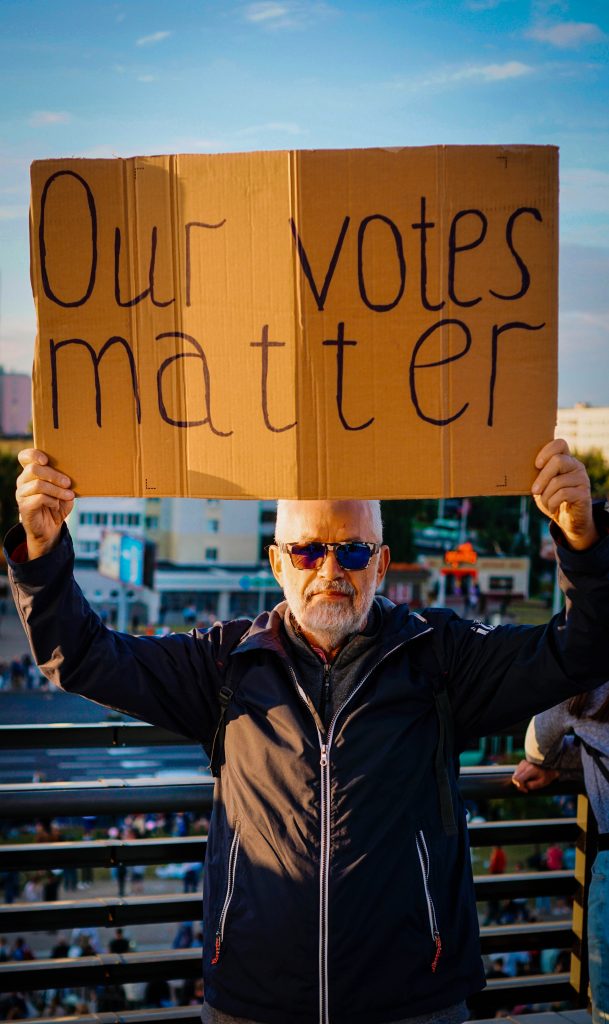Have you ever seen your local politician on a bike? We sure hope so, as politicians are the key players in bringing change to your city’s cycling infrastructure. They can turn your strategy into policy. So how do we get their attention and, most importantly, their support for our cause?
If you are interested in sustainable mobility and bringing innovation to your city, then you probably know that change is almost always met with political opposition. Sadly, it is not enough to get those politicians on your side who already support your cause, it is necessary to know how to persuade undecided and opposed politicians as well.
So how are organizations getting politicians on board for their cause, and how can you do the same?
Leadership Matters
We’re sure you’re familiar with the name Anne Hidalgo. She became the first female mayor of Paris back in 2014 and has changed the city’s game since then. Committed to turning Paris into a green and bike-friendly city, Hidalgo has already reduced lanes and speed limits, and has closed dozens of Parisian streets, including the Seine river banks, to cars completely.

Leadership makes a huge difference – and even if you don’t have an Anne Hidalgo in your city (yet), start by picking the civil servants who are trying to do good things. If you have a good strategy to change your city but no actual political support, the change will not happen. You need to engage and recruit people for your cause, and the extent to which politicians identify with your cause will strongly influence the amount of work and time they will put into their implementation.
Lucas Harms, director of the Dutch Cycling Embassy, admits that many politicians are the key players for effective policies, “and in a way, it’s always a shame that it […] depends on their own experiences”.
Similarly, Roger Geffen, policy director of Cycling UK, thinks it’s not per se a question of the party membership whether politicians support cycling, but rather the politician’s individual opinion. In the UK, a lot of the improvement in the cycling infrastructure was achieved when Boris Johnson still served as Mayor of London. Johnson has been vocal about his support for cycling and is an eager cyclist himself. Roger also points out that cycling can be quite good for the reputation of a politician which was the case for Boris Johnson who has been praised for cycling while being Mayor of London.
If you are lucky, your city already has an agenda that is related to your cause. Use that. Copenhagen, for instance, set up the goal to become carbon-neutral by 2025 in 2009. Every following policy that was focusing on reducing car-use and improving cycling infrastructure served the purpose of the broader political agenda.
Research relevant goals of your city and find out how your project and your ideas can be integrated. An idea that serves an existing commitment is much more convincing!
Find Arguments That Work for Politicians You’re Approaching
It is not only a question of what message you’re communicating, but which one to whom, and when. Figure out what angle of your project resonates with whoever you plan to speak with – the upsides you want to highlight will sound very different whether you’re speaking to neighbors, shop-owners, politicians from a democrat or republican party, kids, or elderly people.
Find out what values the person upholds and align your message with them. This has been tried and proven multiple times – check out this New York Times article on trying to convince politicians from different political camps to support same-sex marriage, for example.
Figuring out which message to convey is one part, finding the right framing timewise is the other. Roger states that “there have been times when the climate argument is the most pressing argument. There have been other times when it’s been the pollution argument”, other times it’s health. “They’re all big crises which matter to politicians at different times, depending on what’s the wider agenda. They come and go.”
When getting politicians on board, it can be helpful to have overlapping arguments for your cause. Cycling is not only a sustainable form of transportation but also an overarching urban planning strategy that is beneficial for environmental issues as well as health and safety policies, just to name a few.
“Frame it as a tool, as a means to transform the higher, overarching societal goals.”
Lucas Harms, Director Dutch Cycling Embassy
Klaus Bondam, CEO of the Danish Cyclists’ Federation agrees, describing politics and city councils as a “machine room” and cycling as an important key to many challenges in cities such as congestion and public health.
Think of core messages that resonate with different sets of values, adjust them to the public agenda of the moment, and widen your approach. Do not only speak to the politicians in the transportation department but build a network of departments dealing with different aspects of your cause – be it public health, environment, or safety.
Build Coalitions
To showcase the overarching goals, it is useful to have corporations and stakeholders that have already agreed to work with you. In Cork, promoting the electric bicycle was a cooperation between the City Council, local retailers, and credit unions who could profit from this campaign.

Additionally, it is crucial to work with politicians from every political spectrum regardless if they are conservative or left-oriented. As we told you before, it is often the individual’s attitude that matters. Build coalitions across party lines, otherwise it might be hard to get the majority of votes for your cycling policy.
Convince Them With Data
You won’t win over politicians with the simple wish for a car-free city – but the good news is that you don’t have to. Calculations and numbers are the politicians’ best friend, and bikeonomics have a lot of arguments for you to make your case.
Many policymakers are more open to the idea of investing in cycling if they see that it is indeed very profitable. Look at Denmark, for example: As one of the leading countries when it comes to investing in cycling infrastructure, the reason for politicians to support this green development lies in the overarching economic analysis of infrastructure projects that include many parameters for each project such as construction costs, travel time, changes in congestion, etc.
Use as much data as you have to make your case – surveys, calculations, and projections are incredibly helpful to showcase the benefits of cycling!
Create Momentum to Prove Your Point
Events and temporary measures can be a great way to create momentum and convince sceptics. In 2009, Copenhagen hosted the UN Climate Summit COP15 and set up their goals of becoming a carbon-neutral city by 2025 in the midst of it, planning the Climate Plan for Copenhagen. During the Summit the Copenhagen Accord was created as a follow up to the Kyoto Protocol. Even though the accord was never ratified, COP15 was a steppingstone for the Copenhagen.
As Klaus Bondam puts it: “As a city, you have to use that your city is connected to a big world agreement.” An event like this, or even on a smaller level, can help build a base on which you can create policies that reflect positively on your city.
As a reaction to the Covid-19 pandemic, a lot of cities went ahead with temporary measures that focus on pedestrians and cyclists. Now is the time to feed off these successes, not allowing politics to go back, but convincing your politicians that these changes are beneficial and should be made permanent.
Getting your politicians on board might be easier if temporary measures for a better cycling infrastructure turn out to be successful. They make the benefits of your cause visible, so use them to prove your point to politicians!
Show That It Actually Works
No one wants to be the first to try something new and fail! Therefore, it can be useful to show examples of successful sustainable urban planning in other cities to your local politicians. There are many cities to learn from – seeing that it actually works is a good way to change politicians’ minds.
Advocate for politicians and mayors from different cities to work together. Have them learn from each other, exchange what worked and what didn’t, and be part of a bigger network. This might give them the support and insight they need to proceed with implementation processes.
Give examples of success stories and help politicians to connect with those who have already taken a step towards successfully investing (more) in cycling infrastructure!
Find examples in our articles about Calgary, London, and Bern, and check out the EU-Project “Handshake” to learn from 13 European cities that have started a dialogue at eye-level.
How to In a Nutshell…
Portraying cycling not only as a form of transportation but as an overarching tool to solve cities’ problems like congestion and public health is key to convince politicians. Find arguments that resonate with their values, make data your best friend, and look out for cycling-loving politicians with leadership potential as necessary allies in bringing change to your city.
Need more arguments to convince politicians to invest in cycling? See the CIVITAS’ brochure about Enabling Cycling Cities!


